
NEW YEAR’S EVE IN BATH
14th August 2020
Dancing between the fairy chimneys of Cappadocia
8th November 2020Sziget Festival 2016, Budapest, Hungary
Sziget Festival 2016, Budapest, Hungary
Only one week a year, the Óbuda-island, in the middle of dazzling Budapest in Hungary, gets transformed into one big festival site: Sziget Festival
If you know me, or have read my blog before, you’ll know that music is a massive part of my life. I love watching bands, listening to live music, and discovering new artists who I’ve never heard of before. But one of my favourite things to do is go to music festivals in the summer. There is something brilliant about the crowds, the atmosphere, and the constant music in the air that makes them special events for me.
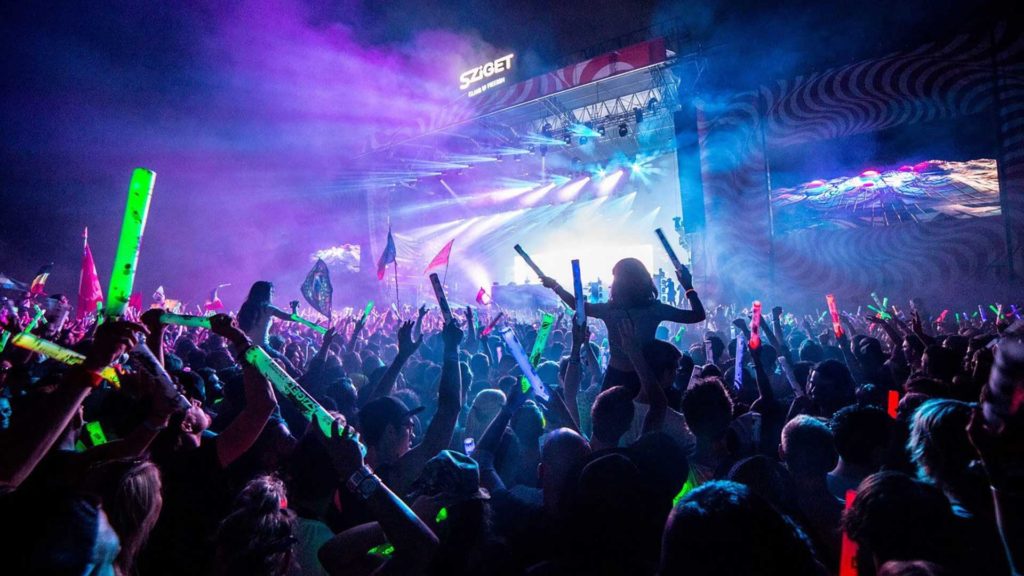
In 2016, I had the chance to head off to Budapest, in Hungary, with one of my best friends, to go to the Sziget Festival. We decided to take the opportunity to combine this great festival experience with exploring Budapest, a city I’d wanted to visit for a long time, so we bought a seven day pass (this gave us more freedom, and the individual tickets for the popular groups were selling out fast!).
Although I love music festivals, I am not really a ‘staying in a tent’ kind of person. I just need my little luxuries, and a basic standard of cleanliness and hygiene. One of the great things about Sziget is that it is right in the middle of the city, so we decided to stay at the Hotel Gozsdu Court, which was perfectly located in walking distance of both the festival and all the main attractions of Budapest.
Budapest is a pretty exciting city. It was founded when two separate towns, Buda and Pashtene, were combined under Magyar rule, a community originating from central Asia who became what we know as Hungarians today.
The main historical influence on Hungary was the Austro-Hungarian Empire. Hungary, and Budapest, was one of the centres of this powerful political entity for a long time, and the majority of the historic architecture that defines modern Budapest is from this period.
Interestingly for me in particular, quite a bit of Hungary was part of the Ottoman Empire (much of modern Turkey) after it was captured by Suleiman the Magnificent after the Battle of Mohaç. It remained under Turkish rule for over 150 years until the Karlofça Agreement.
When we arrived at Budapest airport, getting into the city was simple. For 350 forints (the Hungarian currency, HUF) we were able to take the 200E bus from right outside the airport all the way to Kobanya Kispest in the centre of town. It took just 20 minutes, and we didn’t have to worry about missing the last stop as it was the end of the line. From Kobanya Kispest we transitioned to the metro, which took us the rest of the way.
The Budapest Metro is great, covering most of the centre of the city. You can get a single anywhere for 350 HUF, and a day pass for 1650 HUF. You can buy tickets at the ticket office or from the driver, but if you buy from the driver they are a bit more expensive.

Budapest is divided in two by the Danube River. Most of the historically significant buildings sit on the hilly Buda side, while the life and soul of the city is found on the other side in vibrant Pest. Buda is the more expensive neighbourhood, and is where the fancier, posher communities live. The bridges crossing the Danube are beautiful and well worth visiting, with the Széchenyi Lánchíd Chain Bridgethe best. Walking across it (and taking plenty of photos) is a great experience.
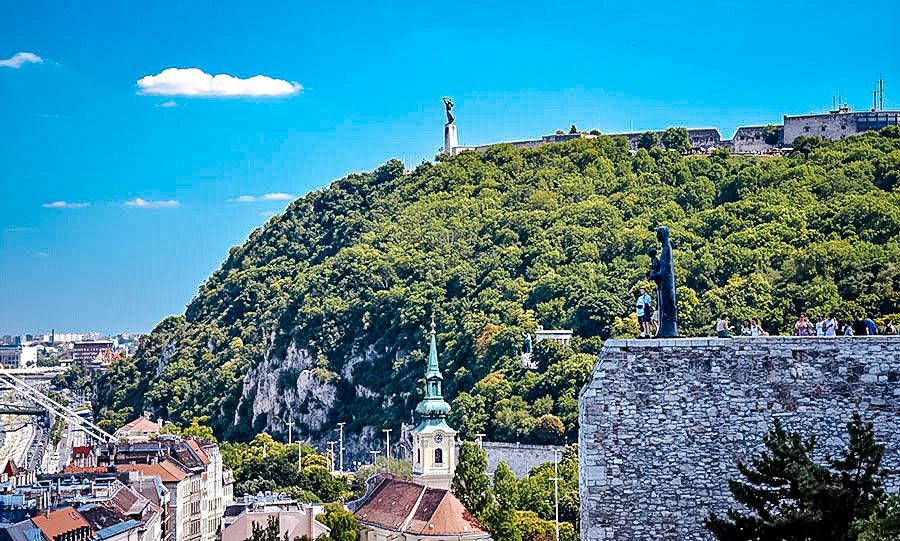

Buda is filled with excellent sights and places to visit. The view from Gellert Hillis fantastic, and the Statue of Liberty (Szabadság szobor)is well worth the climb. Castle Hill (Varhegy) is where the main attractions are, including the Royal Palace (Kiralyi Palota), the Matthias Church(Matyas Templom), and the Fisherman’s Bastion (Halaszbastya). Matthias Church was built in the 13th century, and is one of the oldest buildings in the city. The Fisherman’s Bastion on the other hand is much more modern, but it is a fantastic structure. Part wall, part castle, it is probably the most photogenic spot in Budapest. Buda also boast the Gül Baba Tomb, resting place of a popular dervish in the city during Ottoman rule.
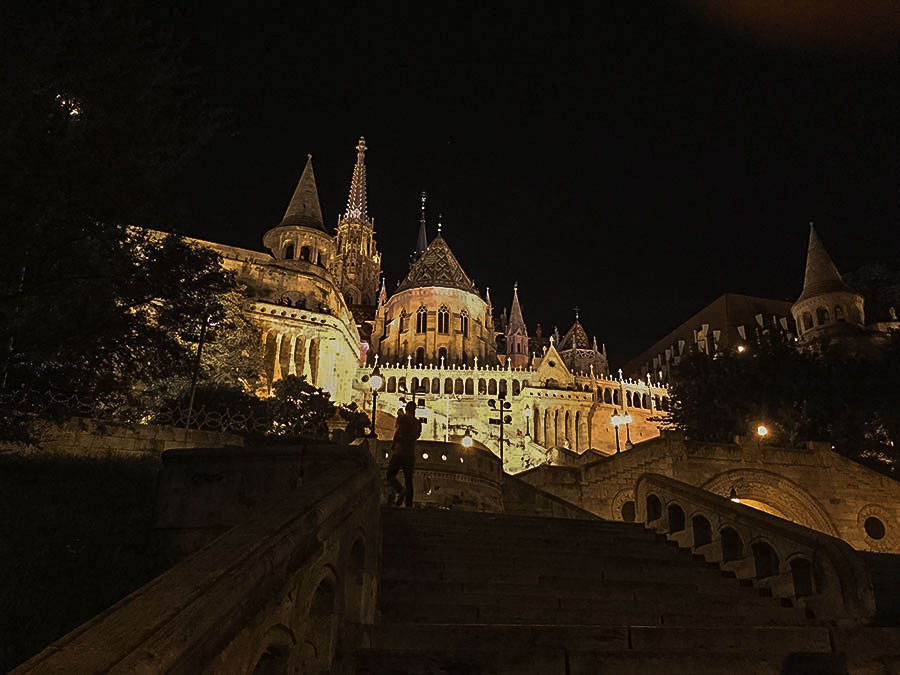
Across the river, Pest is livelier, grittier, and decidedly less fancy. The main street is Váci Utca, which is only open to pedestrian traffic. It has a vibrant, buzzy atmosphere, particularly between Buddha Bar and Vörösmarty Ter. At one end of Váci Utca is Central Market Hall, or Központi Vasarcsarnok in Hungarian. This is the largest fruit, vegetable, and produce market in the city, and is a great place for window shopping. At the other end lies Vörösmarty Square, the stylish home of the New York Cafe and the gastronomic colossus that is the Gerbeaud restaurant.
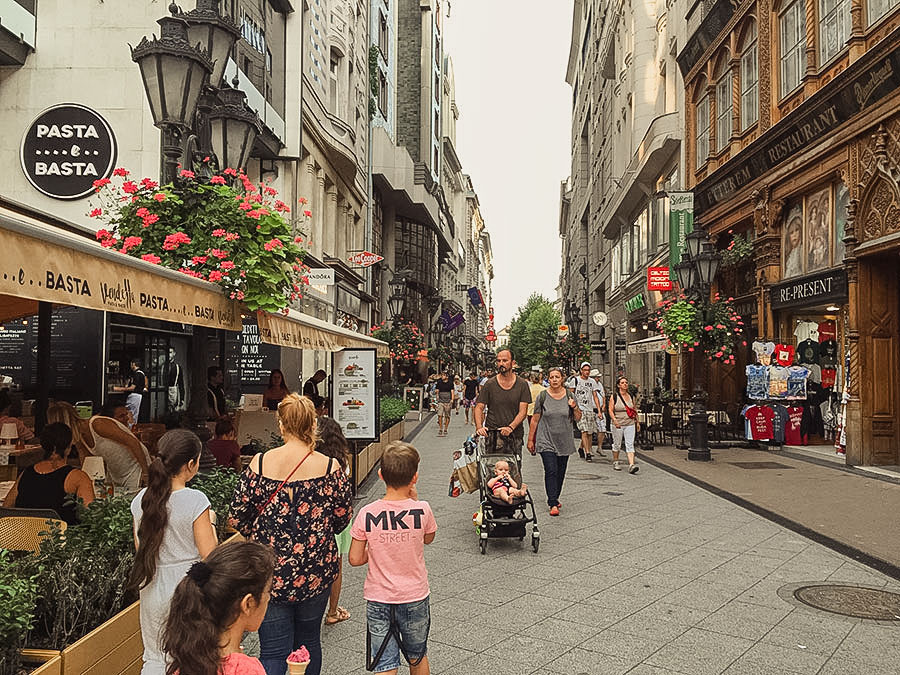

Also worth visiting in Pest is Erzsebet Ter Square, a popular hang-out spot for the city’s youth. There’s a love lock tree to visit with your partner, a load of nice cafes and restaurants around the perimeter, and the excellent Szent Istivan Basilica. From Erzsebet Ter it is easy to find Andrassy Ut, another of Pest’s main and most famous streets, known as the Champs-Elysées of Budapest. It has a wonderful historic atmosphere (as you would expect from a UNESCO World Heritage site!), and includes great shopping, the splendid Opera House, and the magnificent Heroes Square. This square is full of museums and sculptures, and leads on to the main city park of Varosliget, where winter visitors will find an enormous ice skating rink.
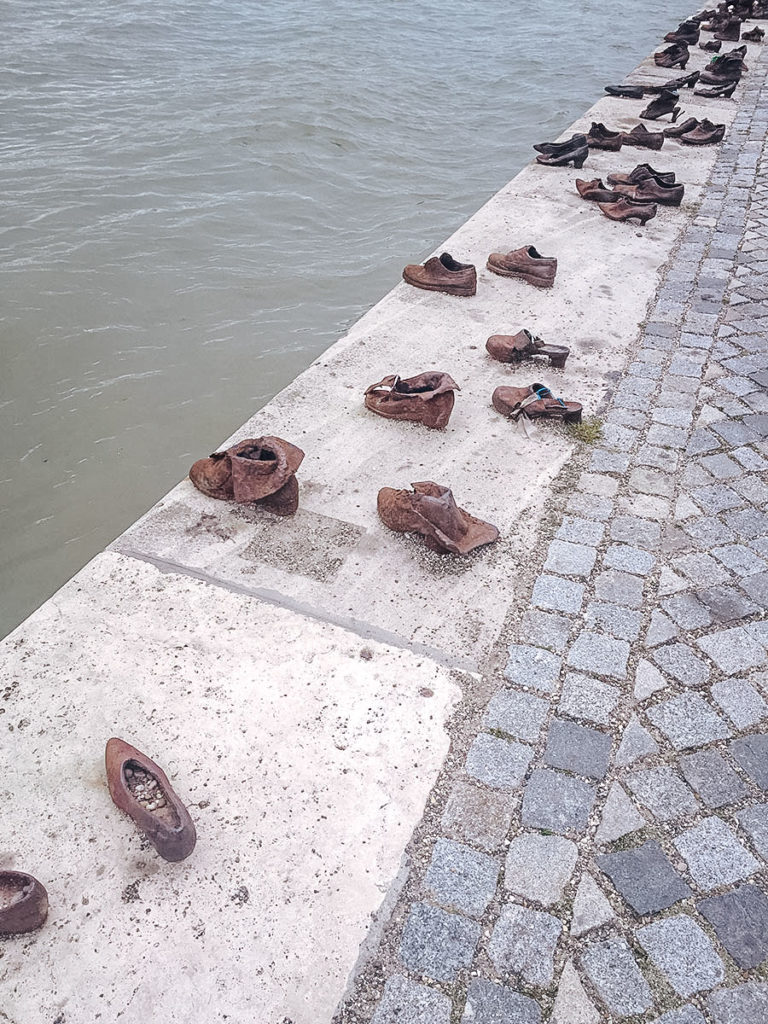
Separating Pest and Buda is the majestic Danube River, a vital part of any visit to Budapest. Walking along the river is a great experience itself, and you’ll see the moving Iron Shoes memorial to the Jews murdered during World War II, as well as the Orszaghaz Parliament Building(a favorite of Freddy Mercury, who tried to buy it!).
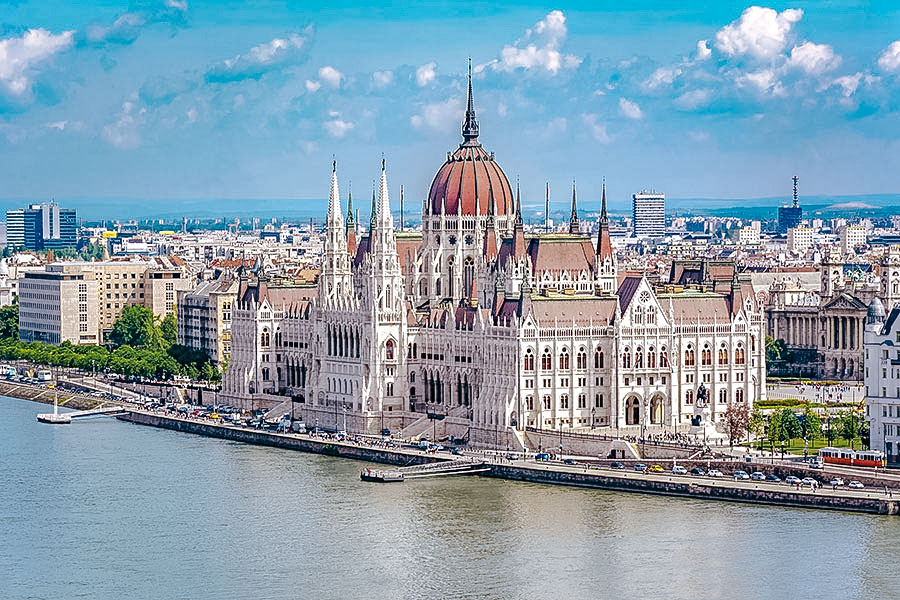
For nightlife and excitement in Pest, head to the Jewish Quarter (Zone Seven), situated around the Central Synagogue (which happens to be Europe’s largest synagogue!). The area is full of life, with bars and parties everyday on Kiraly, Dob, and Kazincy. The district is full of excellent restaurants, cafes, and drinking dens, but the main attractions are the famous (or notorious) ruin bars. The ruin bar concept emerged after the fall of Communism in Budapest, with businesses taking over the atmospheric but derelict properties scattered around the neighbourhood. They decorated the houses and courtyards with objects taken from the garbage, scrap, and unused items. The result is a selection of remarkable bohemian bars with amazing creative design. The bar named “Szimpla Kert” is the pioneer, a truly unique drinking experience, and incredibly reasonably priced as well!
After a night out in the ruin bars of Zone Seven, some intense pampering and relaxation is probably in order. Luckily one of the most enjoyable activities in Budapest is its amazing thermal spas. The are natural hot baths and spas across the city, but the Széchenyi Thermal Bathis undoubtedly the finest, a grandiose palace of warm waters and natural treatments, and the perfect way to recover from a little too much fun the night before!
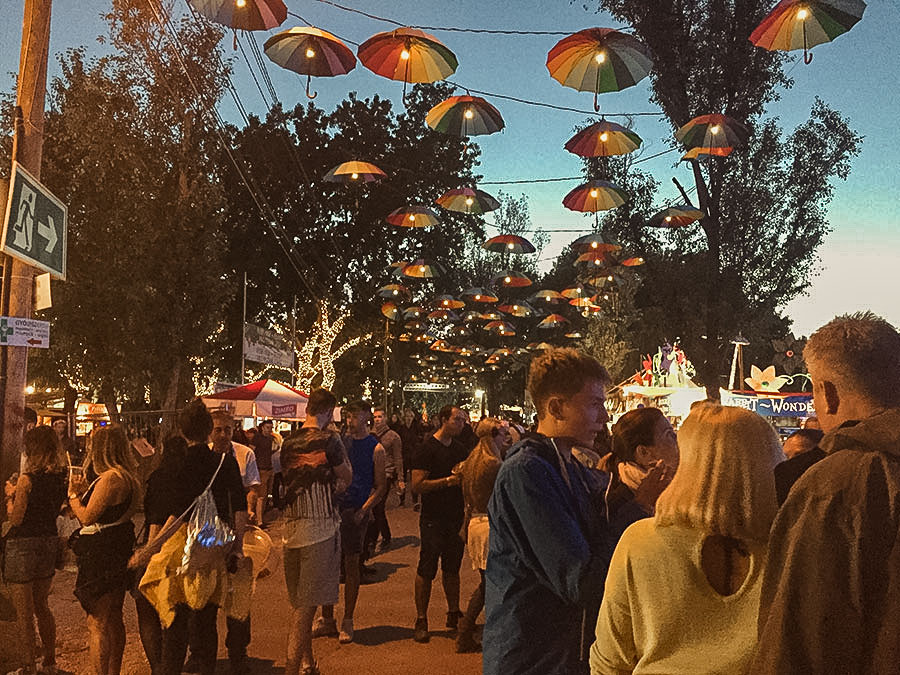
So, on to the real reason I was in Budapest – Sziget Music Festival!
Sziget is held every August on Óbudai-sziget, a leafy 108-hectare island on the Danube for a week. Apart from the three main stages, there are dozens of smaller attractions across the island, such as smaller tents and stages, a circus, museums, workshops, theatres, an open-air cinema, and even a beach! It is literally not possible for you to be bored or to find yourself with time to kill at this festival.

Sziget runs for a week, and there is music from the very first morning of the festival. During my time there, there were performances from some of my favourite artists, including Rihanna, Muse, David Guetta, Chemical Brothers, Sigur Ros, Sia, Manu Chao, La Ventura, Die Antwoord, Noel Gallagher, Skunk Anansie, Kaiser Chiefs, Kovacs, Ceza, Oscar and the Wolf, and Bring me the Horizon.

When entering the festival, you are given a Sziget passport that includes the program, and lets you come and go from the festival as you please. It is nicely designed just like a real passport, with space for you to paste a photograph, and customize it as you like. Getting stamps in your passport from various venues lets you go to the Sziget ‘Immigration Office’ and apply for a ‘Green Card’, but I can’t tell you what this is as despite my best efforts I wasn’t able to complete my passport!
The last day of this amazing festival was truly special. DJ Hardwell played an extraordinary set, with the finale lit up by an astonishing background of fireworks over the river. A perfect end to a wonderful holiday.




